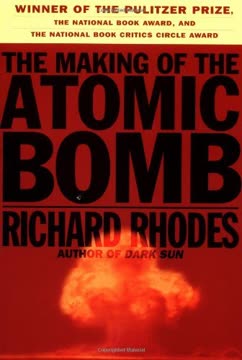Key Takeaways
1. The Inevitable March of Scientific Discovery
It is a profound and necessary truth that the deep things in science are not found because they are useful; they are found because it was possible to find them.
Unstoppable progress. The book underscores that scientific discovery, particularly in nuclear physics, was an inevitable process. Given the relentless pursuit of knowledge and the experimental nature of the field, the discovery of nuclear fission was bound to happen, regardless of intentions or potential consequences.
Physics as exploration. The author emphasizes that nuclear physics is primarily an experimental science, driven by the physical manipulation of objects in the laboratory. This hands-on approach, combined with the innate curiosity of scientists, made the discovery of nuclear fission almost unavoidable.
Beyond human control. The narrative suggests that attempting to suppress or halt scientific progress is futile. The inherent drive to understand the universe and the experimental nature of physics make such discoveries inevitable, regardless of ethical considerations or potential dangers.
2. The Power and Peril of Pure Knowledge
Knowledge is itself the basis for civilization.
Knowledge as a double-edged sword. The book highlights the inherent duality of scientific knowledge. While it forms the foundation of civilization and progress, it also carries the potential for unintended and destructive applications.
The Faustian bargain fallacy. The author refutes the notion that scientists made a Faustian bargain by pursuing nuclear physics. The pursuit of knowledge, in itself, is not inherently evil, but its applications can be both beneficial and detrimental.
Responsibility for consequences. The narrative suggests that scientists cannot be held solely responsible for the consequences of their discoveries. Knowledge has consequences, not always intended, not always comfortable, not always welcome. The application of knowledge is a separate domain, involving political, military, and ethical considerations.
3. The Moral Burden of the Scientist
It is still an unending source of surprise for me to see how a few scribbles on a blackboard or on a sheet of paper could change the course of human affairs.
The weight of discovery. The book explores the moral burden carried by scientists who unlocked the secrets of the atom, particularly their awareness of the potential for mass destruction. This burden is exemplified by figures like Robert Oppenheimer, who grappled with the ethical implications of their work.
Individual conscience vs. collective action. The narrative examines the tension between individual conscience and the demands of national security during wartime. Scientists faced agonizing decisions about whether to contribute their expertise to the development of weapons that could cause immense suffering.
The limits of control. The book suggests that scientists, despite their profound knowledge, often have limited control over how their discoveries are used. The application of scientific knowledge is ultimately shaped by political, military, and social forces.
4. The Paradox of Deterrence: Death as a Container
In a profound and even a quantifiable sense, the weapons that counseled caution these past seven decades at the level of deep nuclear fear served as containers in which to sequester the deaths they held potential, like a vaccine made from the attenuated pathogen itself.
Nuclear weapons as containers of death. The book presents a counterintuitive argument that nuclear weapons, despite their destructive potential, have paradoxically reduced large-scale warfare by making it too dangerous for major powers to engage in direct conflict.
The logic of Mutually Assured Destruction (MAD). The narrative suggests that the threat of nuclear retaliation has created a state of "deep nuclear fear" that has deterred major powers from initiating large-scale conflicts, effectively containing potential deaths within the weapons themselves.
The limits of deterrence. The author acknowledges that deterrence is not a foolproof system and that the risk of accidental or miscalculated use remains a constant threat. The book also explores the dangers of proliferation and the potential for regional nuclear conflicts.
5. The Double Standard of Nuclear Weapons Ownership
As long as any state has nuclear weapons, others will seek to acquire them.
The axiom of proliferation. The book introduces the "axiom of proliferation," which posits that as long as any state possesses nuclear weapons, other states will inevitably seek to acquire them, driven by a desire for fairness and security.
The hypocrisy of nuclear "haves" and "have-nots." The narrative critiques the double standard of nuclear powers who claim the right to possess these weapons for their own security while denying that right to other nations, creating inherent instability in the international order.
The illusion of security. The author challenges the notion that nuclear weapons provide true security, arguing that they are a common danger to all, transcending national borders and ideologies, and that their existence ultimately undermines the sovereignty they are intended to protect.
6. The Fragility of Peace in a Nuclear World
The years since 1945 have been a dangerous but unavoidable learning experience.
The constant threat of nuclear disaster. The book emphasizes that the world has narrowly avoided nuclear catastrophe on numerous occasions, highlighting the precariousness of the nuclear peace and the potential for accident, miscalculation, or escalation.
The need for vigilance and understanding. The narrative underscores the importance of continuous learning and adaptation in the nuclear age, urging readers to understand the complexities and paradoxes of nuclear weapons to prevent future disasters.
The potential for regional nuclear war. The author warns of the devastating consequences of even a limited regional nuclear conflict, citing studies that project widespread agricultural collapse and mass starvation resulting from the injection of black smoke into the upper atmosphere.
7. The Republic of Science: A Self-Governing Community
The authority of scientific opinion remains essentially mutual; it is established between scientists, not above them.
Science as a self-regulating system. The book delves into the inner workings of the scientific community, portraying it as a "republic of science" governed by a network of independent researchers who cooperate and critique each other's work.
The role of belief and mentorship. The narrative emphasizes the importance of belief in the scientific method and the transmission of knowledge and judgment through mentorship, highlighting the apprenticeship model that shapes scientific expertise.
The limitations of science. The author acknowledges that science, while powerful, is not infallible and that its scope is limited. The scientific method, while effective for understanding the natural world, does not provide answers to all human questions or guarantee benevolent outcomes.
8. The Inhumanity of Total War and the Rise of Mass Destruction
Since we are predators, at the top of the food chain, our worst natural enemies historically have been microbes.
The inversion of natural and man-made violence. The book traces the shift from a world where epidemic disease was the primary threat to human life to one where man-made violence, particularly war, became the dominant cause of death, especially in the 20th century.
The pathological exercise of national sovereignty. The narrative argues that the increasing efficiency of killing technologies has made the extreme assertion of national sovereignty a dangerous and destructive force, leading to unprecedented levels of human slaughter.
The promise of a post-war world. The author suggests that the development of nuclear weapons, while terrifying, has paradoxically reduced the virulence of man-made death by making total war suicidal, potentially ushering in a new era of relative peace and cooperation.
9. The Power of Visionary Individuals in Shaping History
It is still an unending source of surprise for me to see how a few scribbles on a blackboard or on a sheet of paper could change the course of human affairs.
The impact of individual insights. The book highlights the role of individual scientists, like Leo Szilard, in shaping the course of history through their insights and actions, demonstrating how a single idea can have profound and far-reaching consequences.
The importance of moral courage. The narrative emphasizes the moral courage of individuals who challenged prevailing norms and took risks to advocate for their beliefs, even in the face of opposition or personal danger.
The limitations of individual agency. The author acknowledges that individual actions are often constrained by larger social, political, and technological forces, suggesting that even the most visionary individuals cannot fully control the outcomes of their efforts.
10. The Enduring Legacy of the Manhattan Project
The discovery of how to release nuclear energy, like all fundamental scientific discoveries, changed the structure of human affairs—permanently.
A world transformed. The book concludes by emphasizing the irreversible impact of the Manhattan Project on human history, marking the entry into a new era where humankind possesses the means of its own destruction.
The paradox of progress. The narrative suggests that scientific progress, while often driven by noble intentions, can have unintended and unsettling consequences, forcing humanity to confront new ethical and political challenges.
The continuing need for vigilance and adaptation. The author urges readers to remain vigilant and adaptable in the face of the ongoing challenges posed by nuclear weapons, emphasizing the importance of understanding their complexities and working towards a more peaceful and secure future.
Last updated:
FAQ
What is The Making of the Atomic Bomb by Richard Rhodes about?
- Comprehensive historical narrative: The book provides a detailed account of the scientific, political, and military developments that led to the creation and use of the atomic bomb during World War II.
- Focus on key figures: It weaves together the personal stories and contributions of scientists, military leaders, and political figures, such as Niels Bohr, Enrico Fermi, Leo Szilard, and J. Robert Oppenheimer.
- Scientific breakthroughs and consequences: The narrative covers the discovery of nuclear fission, the Manhattan Project, and the bombings of Hiroshima and Nagasaki, exploring both the technical achievements and the profound human and ethical consequences.
- Context of global conflict: Rhodes situates the atomic bomb’s development within the broader context of World War II, including the race against Nazi Germany and the impact on international relations.
Why should I read The Making of the Atomic Bomb by Richard Rhodes?
- Meticulously researched history: The book is widely regarded as the definitive account of the atomic bomb’s development, praised for its depth, accuracy, and narrative power.
- Humanizes scientific achievement: Rhodes brings to life the personalities, motivations, and moral struggles of the scientists and leaders involved, making complex history accessible and compelling.
- Explains science and ethics: The book breaks down complicated nuclear physics concepts and delves into the ethical dilemmas and political decisions surrounding nuclear weapons.
- Relevance to modern issues: Understanding the origins and consequences of the atomic bomb provides essential context for ongoing debates about nuclear proliferation, arms control, and global security.
What are the key takeaways from The Making of the Atomic Bomb by Richard Rhodes?
- Science and society intertwined: The book demonstrates how scientific discovery, political urgency, and human ambition combined to create a weapon of unprecedented power.
- Moral and ethical complexity: Rhodes highlights the profound ethical dilemmas faced by scientists and policymakers, emphasizing the lasting impact of their decisions.
- Permanent change in world affairs: The development of nuclear weapons fundamentally altered international relations, introducing the possibility of human self-annihilation.
- Legacy of caution: The narrative serves as a cautionary tale about the dangers of unchecked technological advancement and the need for international cooperation and control.
Who were the key scientists and leaders featured in The Making of the Atomic Bomb by Richard Rhodes, and what were their contributions?
- Niels Bohr: Developed the quantum model of the atom and contributed to the understanding of nuclear fission; advocated for international control of atomic energy.
- Enrico Fermi: Led critical experiments on nuclear chain reactions and pile construction, playing a central role in the Manhattan Project’s scientific leadership.
- Leo Szilard: Conceived the idea of a nuclear chain reaction and was instrumental in initiating the U.S. atomic bomb program; advocated for ethical considerations and control.
- J. Robert Oppenheimer: Directed the Los Alamos Laboratory, coordinating the bomb’s development and balancing scientific innovation with moral reflection.
- General Leslie Groves: Oversaw the Manhattan Project’s military and logistical operations, ensuring the project’s success under immense pressure.
What are the main scientific concepts explained in The Making of the Atomic Bomb by Richard Rhodes?
- Nuclear fission and chain reactions: The book details how splitting uranium atoms with neutrons releases vast energy, enabling self-sustaining chain reactions—the principle behind atomic bombs.
- Isotope separation methods: Rhodes explains the technical challenges of isolating uranium-235 from uranium-238, covering electromagnetic separation (calutrons), gaseous diffusion, and thermal diffusion.
- Implosion vs. gun-type bomb design: The narrative contrasts the simpler uranium gun-type bomb (“Little Boy”) with the complex plutonium implosion bomb (“Fat Man”), highlighting the engineering breakthroughs required.
- Radiation and biological effects: The book discusses the types of radiation emitted by nuclear explosions and their devastating impact on human health and the environment.
How did the political and military context influence the development of the atomic bomb in The Making of the Atomic Bomb by Richard Rhodes?
- Fear of Nazi Germany: The possibility that Germany might develop a bomb first drove urgent research and government investment in the U.S. and Britain.
- Government committees and secrecy: The project was managed by a series of committees and agencies, with strict secrecy and compartmentalization to prevent espionage and leaks.
- International collaboration and competition: Allied cooperation, especially between the U.S. and Britain, was crucial, while parallel efforts in Germany, Japan, and the USSR shaped the global race.
- Postwar arms race: The bomb’s creation triggered a nuclear arms race, fundamentally altering global politics and leading to the Cold War.
What were the major technical and engineering challenges in building the atomic bomb, according to The Making of the Atomic Bomb by Richard Rhodes?
- Isotope separation scale: Separating uranium-235 from uranium-238 required massive, unprecedented industrial plants and innovative engineering solutions.
- Plutonium production and purity: Producing and purifying plutonium in nuclear reactors posed significant chemical and safety challenges, with impurities threatening bomb design.
- Implosion mechanism complexity: The implosion design for the plutonium bomb demanded precise shaping of explosive lenses and advanced diagnostics to ensure symmetrical compression.
- Safety and assembly: Handling radioactive materials and assembling the bombs under tight security and time constraints required meticulous planning and execution.
How does The Making of the Atomic Bomb by Richard Rhodes portray the human and ethical dimensions of nuclear weapons development?
- Scientists’ moral struggles: The book reveals the internal conflicts of scientists like Szilard and Oppenheimer, who grappled with the destructive potential of their discoveries.
- Political and military pressures: Scientists were caught between their pursuit of knowledge and the demands of wartime governments, often facing surveillance and suspicion.
- Legacy of caution and fear: Rhodes reflects on the paradox that nuclear weapons have prevented large-scale war but pose an ongoing existential threat.
- Hope for disarmament: The author envisions a future where nuclear weapons are dismantled and replaced by peaceful dispute resolution mechanisms.
How does The Making of the Atomic Bomb by Richard Rhodes describe the bombings of Hiroshima and Nagasaki and their aftermath?
- Graphic survivor accounts: The book includes vivid descriptions from survivors, detailing the immediate devastation, injuries, and psychological trauma.
- Massive casualties and destruction: Rhodes reports that 70,000 died in Nagasaki and 140,000 in Hiroshima by the end of 1945, with long-term suffering from radiation sickness.
- Societal and cultural impact: The bombings shattered social structures, families, and cultural heritage, leaving survivors to cope with loss and the challenge of rebuilding.
- Moral and symbolic reflections: The narrative uses powerful imagery and survivor testimony to convey the bomb’s profound psychological and ethical impact.
What were the political and military decisions surrounding the use of the atomic bomb, as described in The Making of the Atomic Bomb by Richard Rhodes?
- Target selection and mission planning: The book details the careful selection of targets and the logistical challenges faced by bomber crews during the missions.
- Debates over surrender terms: Rhodes covers the Japanese government’s surrender negotiations and the U.S. insistence on unconditional surrender, as well as internal debates among American officials.
- Committee deliberations: The Interim and Target Committees played key roles in advising on bomb use, timing, and targeting, influenced by political and military considerations.
- Aftermath and surrender: The narrative recounts the final days leading to Japan’s surrender, including the Emperor’s broadcast and the cessation of bombing missions.
What are some of the best quotes from The Making of the Atomic Bomb by Richard Rhodes and what do they mean?
- On scientific discovery: Oppenheimer said, “It is a profound and necessary truth that the deep things in science are not found because they are useful; they are found because it was possible to find them,” highlighting the role of curiosity in scientific progress.
- On nuclear weapons’ threat: Niels Bohr noted that nuclear weapons “are a common danger to all, like an epidemic disease,” emphasizing their universal threat.
- On knowledge and civilization: Bohr’s statement, “Knowledge is itself the basis for civilization,” underscores the double-edged nature of scientific advancement.
- On proliferation: The Canberra Commission’s axiom, “As long as any state has nuclear weapons, others will seek to acquire them,” explains the persistent challenge of nuclear disarmament.
How does The Making of the Atomic Bomb by Richard Rhodes explain the legacy and ongoing relevance of nuclear weapons?
- Permanent change in warfare: The atomic bomb introduced a new era where humanity possesses the means for self-destruction, fundamentally altering the nature of war and peace.
- Ongoing ethical debates: The book’s exploration of the bomb’s origins and consequences remains relevant to current discussions about nuclear proliferation and arms control.
- Call for vigilance and diplomacy: Rhodes advocates for continued vigilance, international cooperation, and the pursuit of disarmament to prevent future catastrophe.
- Cautionary tale for the future: The narrative serves as a warning about the dangers of unchecked technological power and the importance of learning from history.
Review Summary
The Making of the Atomic Bomb is praised as a comprehensive, detailed account of the development of nuclear physics and the Manhattan Project. Readers commend Rhodes' ability to blend scientific explanations with compelling historical narratives and character studies. The book is lauded for its thorough research, engaging writing style, and exploration of ethical dilemmas surrounding the bomb's creation and use. While some find the level of detail overwhelming, most reviewers consider it a masterpiece of science history, offering profound insights into the intersection of science, politics, and warfare.
Similar Books

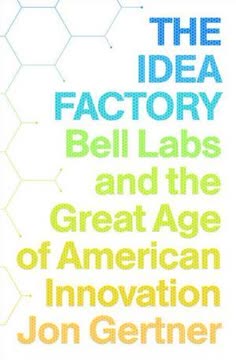
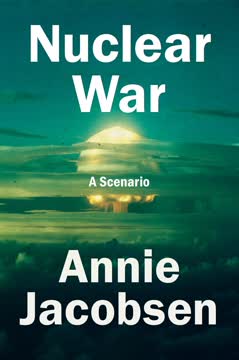
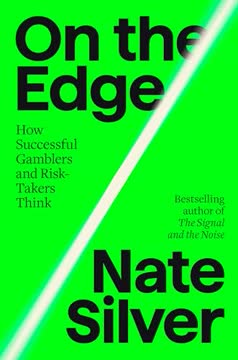
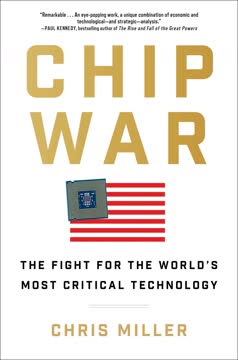
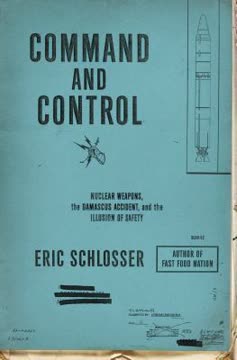

Download PDF
Download EPUB
.epub digital book format is ideal for reading ebooks on phones, tablets, and e-readers.
